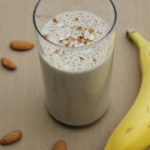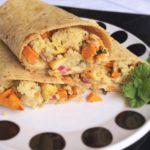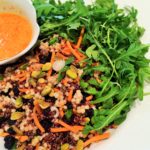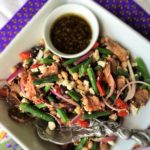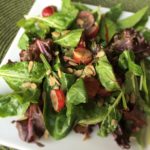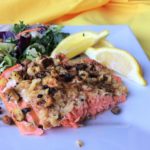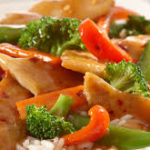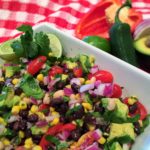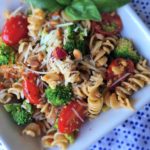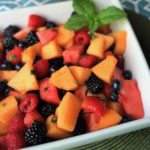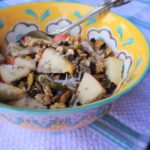The Best 15 Foods for Top Sports Performance
 I came across this list many years ago from a Runner’s World magazine article written by Liz Applegate PhD. I’ve tweaked it from time to time as we learn more about nutritional benefits of certain foods over others. But overall the principles of eating high nutrient-dense foods rules. Nutrient density refers to the amount of nutrients like vitamins, minerals, protein, carbohydrates and fat per calorie. A food with a high nutrient density means you get a lot of nutrient bang for your calorie buck. No surprise then that the most nutrient-dense foods on the planet are . . . dark leafy green vegetables like spinach, kale and broccoli. The least nutrient dense foods are sugars and fat.
I came across this list many years ago from a Runner’s World magazine article written by Liz Applegate PhD. I’ve tweaked it from time to time as we learn more about nutritional benefits of certain foods over others. But overall the principles of eating high nutrient-dense foods rules. Nutrient density refers to the amount of nutrients like vitamins, minerals, protein, carbohydrates and fat per calorie. A food with a high nutrient density means you get a lot of nutrient bang for your calorie buck. No surprise then that the most nutrient-dense foods on the planet are . . . dark leafy green vegetables like spinach, kale and broccoli. The least nutrient dense foods are sugars and fat.
For maximum performance in sports and athletics we need to fuel with foods that 1) provide ample nutrition for the metabolic pathways that allow us to move, shoot, breathe, jump, hit and pedal or whatever your fitness routine demands, 2) replenish all those same nutrients so we can go do it all over again the next day and 3) repair tissues from damage incurred from exercise. I’ll discuss more about recovery in another post about pre- and post-workout meals.
So here’s the list in no particular order with links to posted recipes from the blog:
Almonds
Athletes should eat a small handful of almonds at least three to five times per week. Nuts, especially almonds, are an excellent source of vitamin E, an antioxidant that many athletes fall short on because there are so few good food sources of it. Studies have shown that eating nuts several times per week lowers circulating cholesterol levels, particularly the artery-clogging LDL type, decreasing your risk for heart disease. And the form of vitamin E found in nuts, called gamma-tocopherol (a form not typically found in supplements), may also help protect against cancer.
Recipe link: Mother’s Day Morning Glory Protein Smoothie, Simple Purple (Protein) Smoothie
Eggs
One egg fulfills about 10 percent of your daily protein needs. Egg protein is the most complete food protein short of human breast milk, which means the protein in eggs contains all the crucial amino acids your hard-working muscles need to promote recovery. Eat just one of these nutritional powerhouses and you’ll also get about 30 percent of the Daily Value (DV) for vitamin K, which is vital for healthy bones. And eggs contain choline, a brain nutrient that aids memory, and leutin, a pigment needed for healthy eyes. Choose omega-3 enhanced eggs and you can also increase your intake of healthy fats. Don’t worry too much about the cholesterol: Studies have shown that egg eaters have a lower risk for heart disease than those who avoid eggs.
Recipe links: Summer Vegetable Three-Cheese Frittata, Quick and Easy Breakfast Burritos
Sweet potatoes
This Thanksgiving Day standard should be on the plates of athletes year-round. Just a single 100-calorie sweet potato supplies over 250 percent of the DV for vitamin A in the form of beta-carotene, the powerful antioxidant. Sweet potatoes are also a good source of vitamin C, potassium, iron, and the two trace minerals manganese and copper. Many athletes fail to meet their manganese and copper needs, which can have an impact on performance since these minerals are crucial for healthy muscle function. There are even new sweet-potato varieties that have purple skin and flesh and contain anthocyanidins, the same potent antioxidant found in berries.
Recipe link: Roasted Sweet Potato, Tofu and Quinoa Wrap, Parmesan-Crusted Baked Sweet Potato Fries
Whole-Grains with Protein
Look for whole-grains that are high in fiber and protein. For example, one cup of quinoa fills you up with a hefty 8 grams protein and 5 grams of fiber (that’s 25 percent of the DV) and is loaded with heart-healthy phytonutrients. Fiber is essential for a properly functioning digestive system which keeps you at your best, not weighed down, for optimum performance. If you add 3-4 ounces chicken or fish you’ll get 30 to 40 percent of your protein needs in one serving. Other high-protein/high-fiber grains include beans and lentils.
Recipe link: Red Quinoa, Couscous and Arugula Salad, Kale and Quinoa Salad with Lemon Oregano Dressing
Lean Beef
Getting enough iron is essential for proper oxygenation of tissues during athletic performance. Premenopausal women athletes are particularly susceptible to iron-deficiency and may benefit from eating foods rich in iron including lean meats, dark green leafy vegetables, dried fruit, beans and lentils as well as fortified grains. Iron from animal sources is more readily absorbed versus plant sources of iron. However, combining plant sources with a vitamin C-rich food enhances absorption i.e. oranges or strawberries tossed into a spinach salad or tomatoes added to bean chili.
Recipe link: Grilled Flank Steak Bean Salad, Greek Quinoa Beef Meatballs
Mixed Salad Greens
Rather than selecting one type of lettuce for your salad, choose mixed greens, which typically offer five or more colorful delicate greens such as radicchio, butter leaf, curly endive, and mache. Each variety offers a unique blend of phytonutrients that research suggests may fend off age-related diseases, such as Alzheimer’s, cancer, heart disease, and diabetes. These phytonutrients also act as antioxidants, warding off muscle damage brought on by tough workouts. You can usually buy mixed greens in bulk or prewashed in bags.
Recipe link: Mixed Greens, Grape and Sunflower Seed Salad, Summer Strawberry and Chicken Salad with Sweet Thyme Dressing
Salmon
Nutrition-wise, salmon is the king of fish. Besides being an excellent source of high-quality protein (you get about 30 grams in a four-ounce serving), salmon is one of the best food sources of omega-3 fats. These essential fats help balance the body’s inflammation response, a bodily function that when disturbed appears to be linked to many diseases including asthma. A recent study showed that people with exercise-induced asthma saw an improvement in symptoms after three weeks of eating more fish oil. For maximum omega-3 content, choose wild versus farmed.
Recipe link: Maple Walnut Crusted Salmon, Strawberry, Avocado Salad with Honey-Glazed Grilled Salmon
Stir-fry Vegetables
Research shows that eating a combination of antioxidants, such as beta-carotene and vitamin C, may lessen muscle soreness after hard interval workouts by reducing the inflammation caused by free-radical damage. Most ready-to-use stir-fry veggie combos offer a potent mix of antioxidants by including red and yellow peppers, onions, bok choy, and soy beans. And frozen vegetable mixes save lots of prepping time but still provide the same nutrition as their fresh counterparts.
Recipe link: Asian Chicken and Vegetable Stir Fry, Mongolian Beef Broccoli
Canned Black Beans
One cup of these beauties provides 30 percent of the DV for protein, almost 60 percent of the DV for fiber (much of it as the cholesterol-lowering soluble type), and 60 percent of the DV for folate, a B vitamin that plays a key role in heart health and circulation. Black beans also contain antioxidants, and researchers theorize that this fiber-folate-antioxidant trio is why a daily serving of beans appears to lower cholesterol levels and heart-disease risk. In addition, black beans and other legumes are low glycemic index (GI) foods, meaning the carbohydrate in them is released slowly into the body. Low GI foods can help control blood sugar levels and may enhance performance because of their steady release of energy.
Recipe link: Fiesta Black Bean Salad with Avocado and Lime, Spicy White and Black Bean Enchiladas
Whole-grain Pasta
Pasta has long been an athlete’s best friend because it contains easily digestible carbs that help you restock spent glycogen (energy) stores. Whole-grain versions are a must over refined pastas because they contain more fiber to fill you up, additional B vitamins that are crucial to energy metabolism, and disease-fighting compounds such as lignans. And even better, pastas such as Barilla Plus offer whole-grain goodness along with heart-healthy omega-3 fats from ground flaxseed and added protein from a special formula of ground lentils, multigrains, and egg whites to help with muscle repair and recovery.
Recipe link: Fresh Vegetables Pasta Salad with Sun-Dried Tomato Pesto, Lemon Basil Chicken over Whole Wheat Penne Pasta
Chicken
Athletes need about 50 to 75 percent more protein than non-athletes to help rebuild muscles and promote recovery after tough workouts. And just one four-ounce serving of chicken can supply about half an athlete’s daily protein needs. Along with protein, chicken contains selenium, a trace element that helps protect muscles from the free-radical damage that can occur during exercise, and niacin, a B vitamin that helps regulate fat burning during a run. New studies also suggest that people who get ample niacin in their diet have a 70 percent lower risk of developing Alzheimer’s disease.
Recipe link: Chipotle Lime Grilled Chicken, Cauliflower Rice, Chicken and Sausage Italian Bake
Mixed Berries
The colorful compounds that make blueberries blue, blackberries deep purple, and raspberries a rich shade of red are called anthocyanins–a powerful group of antioxidants that may help stave off Alzheimer’s disease and some cancers. Anthocyanins may also assist with postworkout recovery and muscle repair. Not bad for a fruit group that contains a mere 60 calories or so per cup. And remember: Frozen berries are just as nutritious as fresh ones, but they keep far longer (up to nine months in the freezer), making it easier to always have them ready to eat.
Recipe link: Mixed Fruit Salad with Lime and Mint, Berries and Nuts Spinach Salad with Poppyseed Dressing
Dark Chocolate
As an athlete you deserve at least one indulgence–especially one you can feel so good about. Chocolate contains potent antioxidants called flavonols that can boost heart health. Research suggests that the chocolate flavonols ease inflammation and help prevent blood substances from becoming sticky, which lowers the risk of potential blood clots. But not just any chocolate will do. First off, dark chocolate (the darker the better) generally contains more flavonols than milk chocolate. Also, the way the cocoa beans are processed can influence the potency of the flavonols.
Recipe link: Dark Chocolate-Dipped Almond Meringues, Double Chocolate Zucchini Muffins
Low-Fat Greek Yogurt
Besides being a good source of protein and calcium (one cup provides 13 grams of protein and 40 percent of the DV for calcium), low-fat Greek yogurt with live cultures provides the healthy bacteria your digestive tract needs to function optimally. This good bacteria may also have anti-inflammatory powers that can offer some relief to arthritis suffers. Just look for the live-culture symbol on the yogurt carton.
Recipe link: My Go-To Breakfast Dish, PB and J Greek Yogurt Bowl
Mangos
Eat enough mangos and you may experience less muscle soreness after hard workouts such as downhill running. Why? Mangos and other fruits like oranges, strawberries, papayas, and tomatoes supply 50-100 percent of the DV for the antioxidant vitamin C, and a recent study from the University of North Carolina Greensboro showed that taking vitamin C supplements for two weeks prior to challenging arm exercises helped alleviate muscle soreness.
Recipe link: Baja Fish Tacos with Mango Salsa


